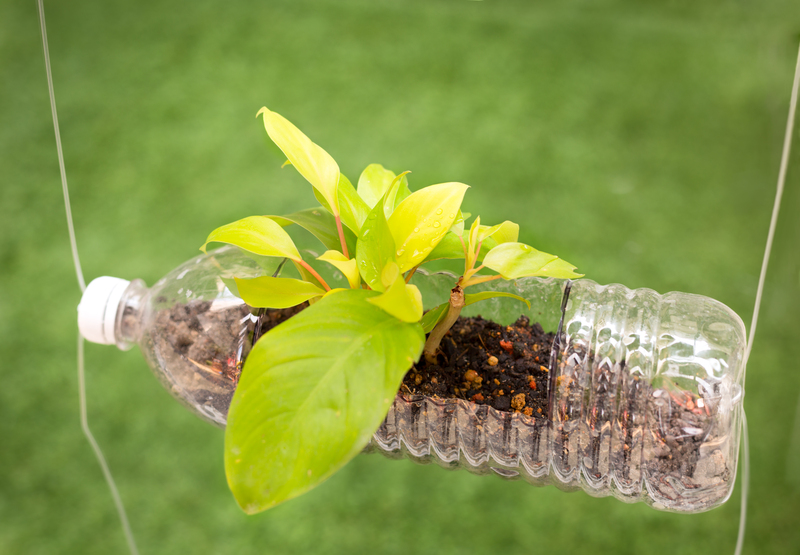The Right Way to Handle and Dispose of Used PPE
Personal Protective Equipment (PPE) plays a vital role in safeguarding individuals across various industries, healthcare institutions, and even our daily lives. However, ensuring proper handling and safe disposal of used PPE is just as crucial to prevent environmental pollution and limit the spread of infectious diseases. In this comprehensive guide, learn the best practices for managing and discarding PPE waste responsibly.
Table of Contents
- Understanding Personal Protective Equipment (PPE)
- Why Proper PPE Disposal Is Important
- Types of Used PPE Materials
- Steps to Handle Used PPE Correctly
- How to Dispose of Used PPE the Right Way
- Environmental Impact of Improper PPE Disposal
- Can You Recycle PPE?
- Workplace Guidelines and Legal Regulations
- Common Mistakes in PPE Disposal
- Conclusion
- Frequently Asked Questions
Understanding Personal Protective Equipment (PPE)
PPE, short for Personal Protective Equipment, includes a broad range of items like gloves, face masks, respirators, gowns, goggles, shields, and protective suits. These are designed to form a barrier between the wearer and potential hazards such as chemicals, infectious materials, or physical injuries.
- Healthcare PPE: Surgical masks, gloves, aprons, N95 respirators, face shields.
- Industrial PPE: Hard hats, safety goggles, hearing protection, high-visibility clothing.
- Household PPE: Disposable masks, latex gloves, cleaning gowns.
The correct management of used PPE is as important as its initial use since improper handling can lead to health and environmental problems.
Why Proper PPE Disposal Is Important
The appropriate way to dispose of used PPE is vital for several reasons:
- Preventing Disease Transmission: Contaminated PPE can harbor pathogens.
- Environmental Protection: Improperly discarded PPE pollutes waterways, soils, and harms wildlife.
- Legal Compliance: Many regions enforce strict used PPE disposal regulations.
- Public Confidence: Visible safe waste handling practices reassure clients, patients, and employees.
Types of Used PPE Materials
Not all PPE is created equal. Distinguishing between disposable PPE and reusable PPE is important for disposal practices.
Disposable PPE
Intended for single-use, these items include:
- Surgical and procedure masks
- Single-use gloves (nitrile, latex, vinyl)
- Disposable gowns and aprons
- Disposable face shields
- Protective shoe covers
Reusable PPE
Designed for repeated use after proper cleaning:
- Cloth face masks
- Reusable goggles and shields
- Industrial helmets and visors
- Washable protective clothing
The correct PPE disposal method varies significantly between these types.
Steps to Handle Used PPE Correctly
Safe PPE handling is essential before the disposal process begins. Follow these steps for optimal safety:
-
Remove PPE Carefully:
- Avoid touching the outer surfaces, which may be contaminated.
- Use inside-out techniques for removing gloves and gowns.
- Take off face protection by straps, not the exposed front.
-
Dispose Immediately:
- Do not leave used PPE on work surfaces or in common areas.
- Use the appropriate waste container (biohazard, general, recycling where available).
-
Wash Hands Thoroughly:
- Use soap and water or an alcohol-based hand sanitizer after PPE removal.
-
Decontaminate Reusable PPE:
- Clean and disinfect reusable items according to the manufacturer's guidelines.
Proper handling techniques prevent cross-contamination and contribute to an effective PPE disposal process.
How to Dispose of Used PPE the Right Way
The correct way to dispose of PPE waste depends on the type and level of contamination. Here's a step-by-step guide:
Waste Segregation
- Infectious PPE Waste: Place in labeled, leak-proof biohazard or medical waste bags.
- Non-infectious Disposable PPE: Put in sealed general waste bins unless your local municipality provides PPE-specific disposal options.
- Sharps: PPE like contaminated needles or blades must go in puncture-resistant sharps containers.
- Reusable PPE: Clean and store for future use as per protocol.
Secure Bagging and Containment
- Do not compress bags with your hands to avoid punctures or contaminating yourself.
- Double-bag waste if contamination is suspected or advised by your local guidelines.
- Seal bags tightly, using twist ties or bag ties as appropriate.
Storage and Collection Points
- Store collected PPE waste in clearly marked, designated areas away from food, public areas, or entrances.
- Keep waste away from direct sunlight and moisture to prevent deterioration while awaiting collection.
- Schedule regular pickups by certified medical or hazardous waste disposal services.
Always follow your institution's or local authority's PPE disposal protocols to ensure safety for yourself and others.
Environmental Impact of Improper PPE Disposal
Improper PPE waste disposal has emerged as a major concern, particularly during the COVID-19 pandemic. Discarded masks, gloves, and face shields are increasingly found in streets, parks, waterways, and oceans. These can take decades to degrade, contributing to:
- Microplastic pollution in water bodies
- Wildlife ingestion and entanglement
- Soil and groundwater contamination
- Increased landfill burden
Responsibly disposing of used PPE safeguards both human health and the planet.
Can You Recycle PPE?
Most conventional waste management systems do not recycle used PPE due to contamination risks and material complexity. However, innovations in PPE recycling are emerging:
- Specialized PPE Recycling Programs: Some organizations and local authorities have established PPE recycling schemes--especially for masks and gloves.
- Industrial Recycling: Certain non-contaminated PPE (such as unused hard hats, plastic visors) may be recycled with industrial plastics.
- Energy Recovery: Incineration of medical-grade PPE in controlled environments can recover energy for electricity generation.
Never place used PPE in standard recycling bins unless instructed by local waste authorities. Always check for region-specific PPE recycling options.
Manufacturers are also working on biodegradable and compostable PPE solutions for a sustainable future.
Workplace Guidelines and Legal Regulations
Employers have a legal obligation to protect workers and ensure safe disposal of used PPE at work:
- OSHA (Occupational Safety and Health Administration) in the US sets out PPE and waste management guidelines for occupational settings.
- CDC and WHO offer updated protocols for handling and discarding PPE in healthcare facilities.
- Environmental Protection Agencies enforce rules on hazardous waste, including PPE, to avert pollution.
- EU and local authorities maintain strict regulations for managing infectious medical waste, including used PPE.
Employers should train staff on PPE handling and disposal procedures, establish easily accessible disposal stations, and routinely review compliance with regulations.
Common Mistakes in PPE Disposal
Recognizing typical errors is key to improving PPE waste management:
- Discarding PPE in open public bins or on streets
- Throwing contaminated PPE into recycling streams
- Leaving used PPE on workspaces or in pockets
- Overfilling bins or failing to securely close waste bags
- Neglecting to wash hands after disposal
Avoiding these mistakes is essential in minimizing infection risks and safeguarding the environment.
Conclusion
Practicing the right way to handle and dispose of used PPE is not only a legal and ethical responsibility, but also a critical step in ensuring community health and environmental sustainability. Whether you are an employer, healthcare worker, or a member of the public, knowing the proper procedures for PPE disposal can make a meaningful difference.
- Always use designated waste streams for different types of PPE.
- Follow up-to-date local and institutional guidelines.
- Educate yourself and others about the importance of safe PPE disposal.
By following these steps, we can collectively reduce contamination risks, limit pollution, and protect both people and planet.
Frequently Asked Questions on PPE Disposal
Q1: Can I throw used disposable masks and gloves in the household trash?
Yes, in most cases, you can dispose of single-use masks and gloves with regular household waste. However, if the PPE was used in a medical or contaminated environment, follow your local authority's guidelines and, if available, use dedicated PPE or biohazard bins.
Q2: Is PPE recyclable in my regular recycling bin?
No. Used PPE should not be placed in general recycling bins due to contamination risk and incompatibility with standard recycling processes. Only use local specialized PPE recycling programs if available.
Q3: Are there penalties for improper disposal of PPE?
Yes. Many cities and workplaces have regulations regarding correct PPE disposal. Improper disposal may result in fines or legal action, particularly in healthcare or commercial settings.
Q4: How can workplaces ensure proper PPE waste management?
- Provide designated, labeled disposal bins at strategic locations.
- Train staff on PPE handling and disposal protocols.
- Conduct regular waste audits and compliance checks.
- Engage licensed waste collectors for hazardous materials.
Q5: Are there eco-friendly alternatives to disposable PPE?
Yes, several companies now offer biodegradable PPE items and reusable options for some equipment. However, ensure that these alternatives meet safety and certification requirements for your environment.
Interested in more hygiene and waste management tips? Read our guides on proper hand hygiene and medical waste management best practices.

